From the Chicago Reader (December 9, 1988). — J.R.
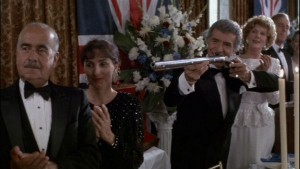
THE NAKED GUN: FROM THE FILES OF POLICE SQUAD!
** (Worth seeing)
Directed by David Zucker
Written by Jerry Zucker, Jim Abrahams, David Zucker, and Pat Proft.
With Leslie Nielsen, George Kennedy, Priscilla Presley, Ricardo Montalban, O.J. Simpson, and Nancy Marchand.
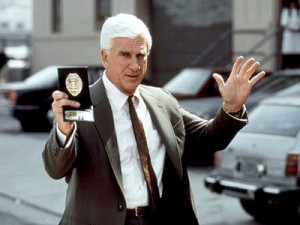
Unlike some of my colleagues, I find the latest comedy by David Zucker, Jim Abrahams, and Jerry Zucker (the ZAZ team) a notch below their previous Airplane! (1980) and Top Secret! (1984). This shouldn’t matter much to anyone looking for an irreverent, anything-goes farce with a fair number of laughs; The Naked Gun is certainly that, and I don’t intend for the following to scare anyone away from it. But I do want to consider what’s been happening to the ZAZ team’s distinctive brand of satire over the past eight years.
All three ZAZ movies use as their point of departure the crystallized form of some bad formula movie. The lead characters wear deadpan expressions through their cliche roles, and the laughs derive largely from non sequiturs in their dialogue and from lunatic gags that surround them as they trudge through their routine plots, impervious to the silliness.
Airplane! stuck to this pattern pretty consistently, lampooning the disaster blockbusters of the 70s like Earthquake, the Airport sequels, and The Towering Inferno. Read more
From a 1989 catalog that I did for the Walker Art Center, Cinema Outsider: The Films of William Klein. — J.R.
William Klein on His Film Work
Klein made the following remarks in a telephone conversation with Jonathan Rosenbaum in early November 1988.

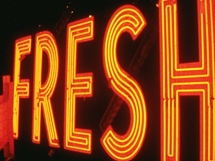

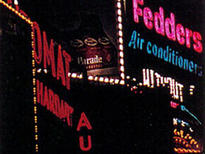
On Broadway by Light (1958) and Orson Welles
I did this book on New York: black-and-white, grungy photographs. People said, ‘What a put-down — New York is not like that. New York is a million things, and you just see the seamy side.” So I thought I would do a film showing how seamy New York was, but intellectually, by doing a thing on electric- light signs. How beautiful they are, and what an obsessive, brainwashing message they carry. And everybody is so thankful for this super spectacle. Anyway, I think it’s the first Pop film.
Afterwards, I went from New York to Paris on a boat. We were on the pier with all our suitcases when I saw Orson Welles with a cigar and a little attaché case – that’s all he had as luggage. I went up to him and said, “Listen, I’ve just shot a film. Would you like to see it?” I showed it to him in the boat’s movie theater, and he said, “This is the first film I’ve ever seen in which the color is absolutely necessary.” Read more
From Wide Angle, vol. 8, no. 3-4, 1986. –- J.R.
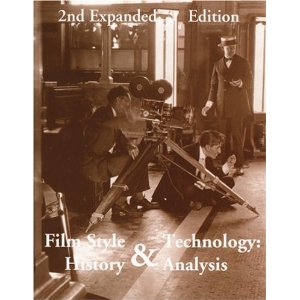
FILM STYLE AND TECHNOLOGY:
HISTORY AND ANALYSIS by Barry
Salt, Starword, 3 Minford Gardens,
London W14 0AN, England, 1983:
paper, $ 15.00, 408 pages, lllustrations
It is a sad commentary on the
narrowness and inflexibility of current
academic publishing in film studies
that this major work had to be brought
out at the author’s own expense.
Handsomely produced and generously
priced, Film Style and Technology:
History and Analysis offers what is
conceivably the most detailed account
of film technology that we have had to
date, stretching from 1885 through the
Seventies, with roughly one chapter per
decade, and for this aspect of the book
alone, no comprehensive library devoted
to film history can afford to be without it.
In addition, the book’s innovative use of
statistical style analysis, while
problematical in relation to certain stylistic
issues, nevertheless introduces a new form
of rigor to film analysis that deserves to be
considered in detail.
If, as a “total” view of cinema, Salt’s approach
often seems constricted, it nonetheless yields
a wealth of potentially useful material to many
different kinds of film scholars. As Salt’s title
makes clear, a technological history of film
represents only one part of his enterprise. Read more







